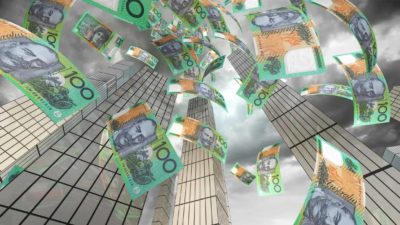The National Australia Bank Ltd (ASX: NAB) share price dropped 6% in February 2023. This was twice the decline of the S&P/ASX 200 Index (ASX: XJO), which fell around 3%.
NAB wasn't alone in seeing a decline, the ASX bank share sector went through a tough fall last month. The share prices of Commonwealth Bank of Australia (ASX: CBA), Westpac Banking Corp (ASX: WBC) and ANZ Group Holdings Ltd (ASX: ANZ) all went backwards.
So, NAB shareholders shouldn't feel too bad considering all the big players in the sector lost some market sentiment.
But, why did the NAB share price fall a considerable amount in one month?
Earnings fail to light up investors
One of the confusing things about investing is that when it comes to reporting financials, a share price can go down even if a business reports good profit growth. Share prices can also rise even if a business reports a difficult result.
It normally comes down to expectations about the result, or perhaps the outlook.
If investors are expecting a business to double its profit from $50 million last year to $100 million this year, but it only makes $95 million, then that could disappoint investors.
With another company, investors may be expecting a net loss to blow out from $20 million last year to $50 million this year, but if the loss is only $45 million, then that may be seen as a win.
How does this relate to the NAB share price?
In the three months to 31 December 2022 (the first quarter of FY23), it said that it made cash earnings of $2.15 billion, which was an 18.7% rise compared to the first quarter of FY22.
Cash earnings before tax and credit impairment charges jumped 27%.
Despite those impressive growth numbers, investors did send NAB shares backwards over the month.
Excluding markets and treasury, NAB revenue rose 12% thanks to higher margins and volume growth. Meanwhile, expenses only rose 4% with higher staff-related costs partly offset by productivity and lower remediation charges.
While interest rates have soared, the ASX bank share said that its net interest margin (NIM) – its lending profit margin – improved by 15 basis points (0.15%) to 1.82% when excluding markets and treasury. It benefited from the rising interest rate environment, but this was offset by home lending competition.
Its percentage of loans that were at least 90 days past due was just 0.62% in the first quarter of FY23. In the first quarter of FY21, it was 1.01% and in the first quarter of FY22, it was 0.81%. In other words, despite all the interest rate rises, arrears are very low – NAB isn't seeing the arrear negatives of the higher interest rates yet.
How much competition is there?
The CBA CEO Matt Comyn recently said at its FY23 half-year result that the market was being "irrational" according to reporting by the Australian Financial Review. The newspaper quoted Comyn, who said:
The home lending market is undergoing a period of extreme change and intense competition.
Cash backs are growing in size and prevalence, and we estimate that banks have deferred costs relating to cash backs of over $1 billion. This figure has increased almost 50% in the past two years, and combined with a substantial increase in commissions over the same period, creates a margin headwind that will flow unevenly across the market.
If this ends up with banks not achieving as high a profit margin as expected, this reduces market profit expectations and may hurt the NAB share price, if it hasn't already.
NAB share price snapshot
While NAB did fall in February, it rose in January. It's currently flat for 2023 to date.









